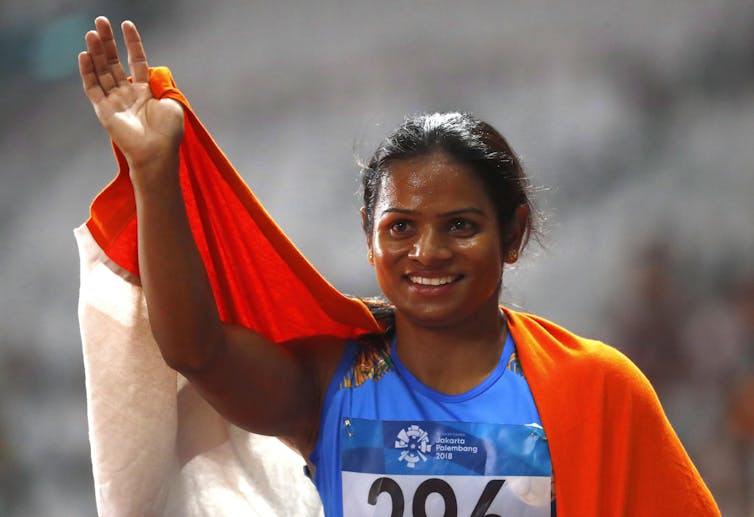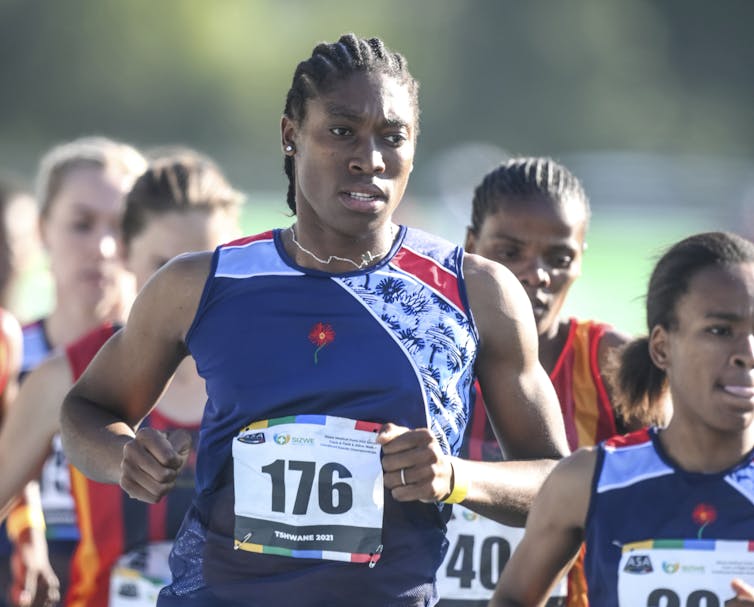Bruce Kidd, Professor Emeritus of Kinesiology and Physical Education at the University of Toronto, argues against sex-testing at the Olympics in this op-ed published in The Conversation.
Like the proverbial whack-a-mole, the Olympic sex test keeps coming back — with disastrous effects for women athletes across the globe — no matter how many times athletes and human rights’ advocates think they have abolished it.
The test was introduced in the 1930s to weed out “abnormal women athletes” from the Olympics. The first test was a physical examination.
During the 1960s, when women began to object to the test’s “nude parades,” the official response was not abolition, but replacement by hormone analysis.
Feminists, athletes, geneticists, ethicists, and national governments protested, but it took until the 1990s when the International Amateur Athletic Federation (now known as World Athletics) and the International Olympic Committee ended the test.
The ‘fine print’
That turned out to be short lived. In the fine print of those decisions, the governing bodies reserved the right to resume the testing of “suspicious” women.
After the triumph of South African middle distance runner Caster Semenya at the 2009 world championships in Berlin, World Athletics and the IOC instituted a “hyperandrogenism” test which set a limit of 10 nanomoles on the amount of natural testosterone a woman could possess to remain eligible.
In 2014, Indian sprinter Dutee Chand was singled out for the test and suspended just as she was finalizing her preparations for the Commonwealth Games in Glasgow. With the help of scholars Payoshni Mitra and Katrina Karkazis, the Sport Authority of India and Toronto lawyers Jim Bunting and Carlos Sayao, Chand appealed to the Court of Arbitration for Sport (CAS), sometimes called the supreme court of international sport. She won.
 India’s Dutee Chand celebrates after her second-place finish in the women’s 100-metre final during at the 2018 Asian Games in Indonesia. (AP Photo/Ashley Landis)
India’s Dutee Chand celebrates after her second-place finish in the women’s 100-metre final during at the 2018 Asian Games in Indonesia. (AP Photo/Ashley Landis)The CAS overturned Chand’s suspension and the very policy itself on the grounds that the scientific evidence submitted by the athletics body was unconvincing. The IOC called off the test and both Chand and Semenya competed in the Rio Olympics, with Semenya again winning the 800 metres.
Short-lived protection
However, the optimism that the CAS would prove an effective protector of gender rights proved short-lived. In 2018, World Athletics imposed a revised threshold of five nanomoles of natural testosterone on the five events in which Semenya runs — ranging from 400 metres to the mile — and promptly suspended her. She, too, appealed to CAS, on the grounds that her human rights as a woman had been violated.
Semenya submitted extensive evidence that the test had driven many other women from the sport, stolen their livelihoods, subjected them to ridicule and harassment, and in a few frightening cases, forced them to undergo unnecessary, irreversible medical intervention, including surgery. Most of the affected athletes came from the Global South.
She was unsuccessful. While the CAS acknowledged the new regulation was discriminatory, it claimed that human rights were beyond the scope of its mandate.
Semenya has since appealed to the European Court of Human Rights, but no decision has been announced.
The ruling by World Athletics means Semenya could compete in the 5,000 metres event without undergoing treatment to reduce her natural testosterone. While she is the current 5,000 metre champion in South Africa, she was unable to meet the Olympic qualifying standard. This means she won’t compete in Tokyo.
 Caster Semenya on her way to winning the 5000-metres at the South African national championships in April. However, she was unable to meet the Olympic standard time in order to compete at the Tokyo Olympics. (AP Photo/Christiaan Kotze/File)
Caster Semenya on her way to winning the 5000-metres at the South African national championships in April. However, she was unable to meet the Olympic standard time in order to compete at the Tokyo Olympics. (AP Photo/Christiaan Kotze/File)The persistence of the test, despite the condemnation of the United Nations High Commissioner for Human Rights, Human Rights Watch, the World Medical Association and many scientific and academic bodies, painfully exposes the empty human rights rhetoric of the IOC. There is no scientific, legal, or ethical basis for such tests.
A history of ignorance
As the longtime athletics official and IOC member Arne Lundqvist acknowledged at the CAS: “There has been a long history of ignorance.”
The way that such policies have been developed flies in the face of the international standard for arms-length vetting, evidence and consultation with those affected.
It is a stain on the Tokyo Olympics that Semenya, the two-time Olympic gold medallist and three-time world champion, one of the most charismatic athletes in the world, has been barred from defending her 800-metre title simply on the basis of unfounded stereotypes.
To empower unaccountable sports bodies, advised by self-selected physicians, to exclude some women on the basis of their personal perceptions of womanhood is both wrong-headed and unfair. The sex test should be abolished once and for all, and gender self-identification should become the basis for eligibility in women’s events at the Games.
Focus on human rights
How can the sex test be abolished? The most obvious solution is to follow Semenya’s lead and win women’s rights under the banner of human rights. Human Rights Watch has proposed that the IOC adopt the UN Guiding Principles on Business and Human Rights, which require a formal legal mechanism to hear and rule on complaints, and others have done the same.
While the Olympic Charter proclaims that “the practice of sport is a human right,” the IOC has failed to provide any mechanism to enforce human rights, claiming that as a private organization it enjoys the “autonomy of sport” from governments and human rights regimes. A growing body of scholarship disputes that claim.
The IOC does seem to be moving in the right direction, floating the notion of “responsible autonomy” and requiring that workers’ and citizens’ rights be protected in the staging of the 2024 Olympics in Paris and the 2028 Olympics in Los Angeles.
But it seems reluctant to impose any human rights requirements or protections upon Tokyo or the 2022 Winter Olympics in Beijing. It continues to restrict athletes’ rights to free speech in the recently announced revisions to Rule 50 that governs conduct at the Games.
I wish there was another way, but to end the sex test once and for all, we must first win the battle for Olympic human rights.
